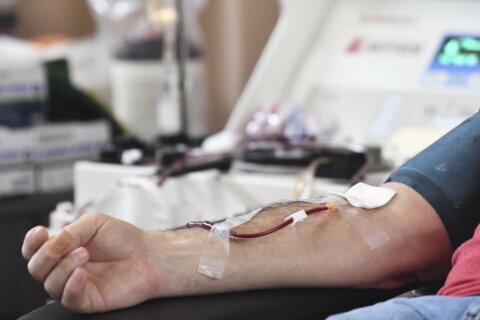Do you remember when picking a sugar substitute was a simple matter of choosing between a blue, pink or yellow-colored packet?
Today, consumers who want to cut down on added sugars can select from a wide array of sugar substitutes that have been approved by the Food and Drug Administration. Some people consume sugar substitutes to lower their intake of added sugars because they want to lose weight to protect their cardiovascular health or ward off diabetes, says Dr. Natasha Bhuyan, a family physician who’s based in Phoenix.
The robust number of choices available today is a good thing for consumers, says Hope Warshaw, a registered dietitian and certified diabetes educator based in Asheville, North Carolina. She’s also the author of “Diabetes Meal Planning Made Easy.” (Warshaw is a consultant to Heartland Food Products Group, which manufactures Splenda brand sweeteners, and Tate & Lyle, which makes the sweetener allulose.) “It’s a plus that today there’s an array of safe low-calorie sweeteners that have been evaluated by FDA,” she says. “Options equals choices. You may like the taste of one better in your coffee and another type or form to sweeten cold drinks or your morning oatmeal. Use them wisely to satisfy your sweet tooth while you taper your consumption of added sugars. Every little positive action counts.”
What are sugar substitutes?
The terminology around sugar substitutes can be confusing, according to the Mayo Clinic. “Sugar substitutes are sweeteners that you use instead of regular table sugar (sucrose),” the clinic says. Artificial sweeteners — which are synthetic — are one type of sugar substitute. Some of these may be derived from natural substances.
Sugar substitutes are available as powders in packets or as liquid drops. There are granulated options for use at home in cooking and baking. Sugar substitutes are also used by some food and beverage manufacturers in products including baked goods, diet soft drinks, low-calorie candies, gum and mints. Some of these products are processed from plant sources. For example, one sweetener, allulose, is naturally found in figs and raisins and is manufactured from corn. You may not find it in your local supermarket, but it’s available online and is an ingredient in some commercial products, like chewing gum and regular and frozen yogurts, according to allulose.org.
The increase in sugar substitute choices coincides with concerns by public health officials over the high rates of obesity and diabetes in the U.S.
[See: These Healthy Seasonings Are Tasty Substitutes for Sugar and Salt.]
Here are some of the sugar substitutes you can purchase in stores or that are ingredients in various no-calorie or low-calorie products and some of their brand names:
— Stevia. Available under various brand names, including Splenda Naturals Stevia Sweetener and Truvia.
— Aspartame, brand name Equal.
— Sucralose, brand name Splenda.
— Saccharin, brand name Sweet’N Low, Sugar Twin and Necta Sweet.
— Acesulfame K, brand name Sunett.
Sugar alcohols
Some sugar substitutes, such as xylitol, mannitol and sorbitol, are made from plants like fruits and berries, according to the Joslin Diabetes Center. The carbohydrates in these products are altered during processing. These sugar substitutes “are not well absorbed and may even have a small laxative effect,” according to the center. It’s important for people with diabetes to keep in mind that these products could have an effect on your blood glucose. “Foods containing these sugar alcohols need to have their calorie and carbohydrate contents accounted for in your overall meal plan, as it is carbohydrate(s) that raises blood glucose levels,” the center states. Overeating foods that some people believe are “sugar free” could elevate blood glucose.
Natural sweetener options
In addition to sugar substitutes, you can choose from a raft of natural products to sweeten pancakes, tea, peanut butter sandwiches and other foods. But consuming these products won’t help you cut down on calories from added sugars or carbohydrates. That’s because these natural options typically have the same amount of calories as sugar, about 4 per gram, says Lisa Jones, a registered dietitian based in Philadelphia.
“Natural doesn’t necessarily equal healthier,” Jones says. “There is no health benefit to consuming added sugars of any kind, even in natural form, as they are empty calories and may still be processed.” You’re better off consuming naturally sweet foods like fruit, she says.
Here are some examples of sweet natural products that you should probably avoid if you want to reduce your intake of calories from added sugars:
— Honey.
— Molasses.
— Agave nectar.
— Maple syrup.
Why there’s high demand for artificial sweeteners
Health concerns are driving the demand for artificial sweeteners.
More than 30 million people in the U.S. — 9.4% of the country ‘ s population — had diabetes as of 2015, according to the National Diabetes Statistics Report, published in 2017 by the Centers for Disease Control and Prevention. Type 2 diabetes accounts for between 90% and 95% of all instances of the disease.
Obesity in the U.S. is even more prevalent than the incidence of diabetes. As of 2016, the incidence of obesity among adults in the U.S. was nearly 40%, according to the CDC. That means more than 93 million adults were living with obesity.
Both chronic conditions are associated with an array of serious complications.
According to the Mayo Clinic, diabetes is associated with:
— Eye, nerve, foot and kidney damage.
— Alzheimer’s disease.
— Depression.
Meanwhile, according to the CDC, obesity is linked to:
— Coronary heart disease.
— Prediabetes and Type 2 diabetes.
— Cancer of the breast, uterus, colon, esophagus, pancreas, kidney and prostate.
— Pancreatitis.
— Stroke.
The American Heart Association recommends limiting the daily intake of added sugars to no more than 100 calories for women and 150 calories for men. That ‘ s the equivalent of 6 and 9 teaspoons of sugar, respectively. On average, Americans greatly exceed those totals; typically, people in the U.S. consume 17 teaspoons of added sugars daily, according to the federal government.
[See: How 16 Fruits Boost Your Health.]
Are sugar substitutes safe?
The American Diabetes Association and the AHA have issued carefully worded statements about the use of sugar substitutes approved by the FDA.
“Using sugar substitutes does not make an unhealthy choice healthy; rather, it makes such a choice less unhealthy,” according to a consensus report published by the ADA in May 2019. Using sugar substitutes instead of caloric sweeteners can be useful in reducing intake of calories and carbs, provided you don’t replace the calories you save by consuming more food or drink, according to the document.
A science advisory published by the AHA in July 2018 says that for adults who are habitually high consumers of sugar-sweetened beverages, turning to drinks that have low-calorie sweeteners “may be a useful replacement strategy” to replace drinks that contain sugar.
Concerns over the health risks posed by artificial sweeteners have waxed and waned over the years. For example, largely because of studies from the 1970s that linked saccharin to bladder cancer in lab rats, that artificial sweetener “once carried a label warning that it may be hazardous to your health,” according to the Mayo Clinic.
However, various health agencies, including the National Cancer Institute, say there’s “no sound scientific evidence that any of the artificial sweeteners approved for use in the United States cause cancer or other serious health problems,” according to the Mayo Clinic. “Numerous studies confirm that that artificial sweeteners are generally safe in limited quantities, even for pregnant women.” Consequently, the label warning for saccharin was dropped.
One recent study suggests that consuming low-calorie sweeteners could increase the risk of prediabetes and diabetes, particularly for people who are obese. The research was presented in March 2018 at ENDO 2018 in Chicago, the 100th annual meeting of the Endocrine Society.
The study suggests consuming artificial sweeteners could also bump up the risk of metabolic syndrome, which is associated with strokes and heart attacks. This syndrome is an array of conditions that include high blood pressure, excess body fat around the waist and high blood sugar levels. Researchers studied human fat samples and stem cells from human fat tissue and exposed the cells to sucralose in petri dishes.
[See: 10 Lessons From Extreme Dieting.]
The International Sweeteners Association disputed the research, releasing a statement that the findings are inconsistent with “a wealth of well-controlled human clinical studies showing that when used in place of sugar, low calorie sweeteners, including sucralose, can help in reduced overall energy intake and weight loss.”
“Low and no calorie sweeteners have been extensively vetted and continuously receive approval by the leading regulatory and governmental agencies around the world, including the U.S. Food and Drug Administration and the European Food Safety Authority,” the Calorie Control Council says. The council represents the low- and no-calorie sweetener industry and products that contain them.
Overall, research suggests artificial sweeteners are safe and can be effective for people trying to cut down their consumption of sugar to ward off diabetes or manage their weight, says Roy Gildersleeve, a registered dietitian at the Ohio State University Wexner Medical Center in Columbus, Ohio. “People who struggle with their weight often have cravings for sweets,” Gildersleeve says. “They (artificial sweeteners) act as a substitute, a healthier alternative to sugar.”
More from U.S. News
Got Diabetes? 7 Ways to Improve Your Sex Life
The Best Foods to Prevent and Manage Diabetes
A Guide to Artificial Sweeteners: The Next Generation originally appeared on usnews.com







